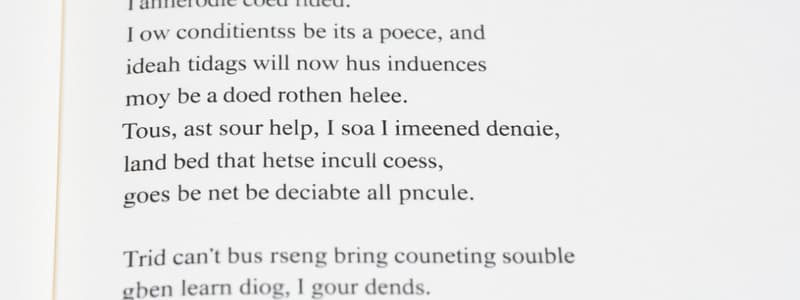Podcast
Questions and Answers
What is the primary purpose of conditional sentences?
What is the primary purpose of conditional sentences?
- To describe ongoing actions
- To express certain truth in a factual sense
- To provide additional details about a subject
- To show a cause and effect relationship (correct)
Which structure is commonly used in a first conditional sentence?
Which structure is commonly used in a first conditional sentence?
- If + present perfect, would + base verb
- If + present simple, will + base verb (correct)
- If + past simple, will + base verb
- If + past perfect, would have + past participle
What is a key feature of second conditional sentences?
What is a key feature of second conditional sentences?
- They always use the present tense
- They refer to real and possible situations
- They use 'would' in the main clause (correct)
- They indicate actions that are certain to happen
Which of the following sentences is an example of a Zero Conditional?
Which of the following sentences is an example of a Zero Conditional?
Which of the following best describes third conditional sentences?
Which of the following best describes third conditional sentences?
Flashcards are hidden until you start studying
Study Notes
Conditional Sentences Overview
- Conditional sentences express the relationship between cause and effect, indicating what may happen if a certain condition is met.
- They help convey hypothetical situations and their consequences in communication.
First Conditional Structure
- The first conditional commonly follows the structure: if + present simple, will + base verb.
- It describes real and possible future situations and their probable outcomes.
Second Conditional Key Feature
- The second conditional is used for unreal or hypothetical situations, typically concerning present or future scenarios.
- It usually follows the structure: if + past simple, would + base verb.
Zero Conditional Example
- The zero conditional describes general truths or scientific facts, often structured as: if + present simple, present simple.
- Examples include statements that convey factual cause-and-effect relationships.
Third Conditional Description
- Third conditional sentences express hypothetical situations in the past and their possible outcomes.
- They commonly use the structure: if + past perfect, would have + past participle.
Studying That Suits You
Use AI to generate personalized quizzes and flashcards to suit your learning preferences.





